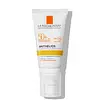What's inside
What's inside
 Key Ingredients
Key Ingredients

 Benefits
Benefits

 Concerns
Concerns

 Ingredients Side-by-side
Ingredients Side-by-side

Zinc Oxide 24%
Cosmetic ColorantWater
Skin ConditioningC12-15 Alkyl Benzoate
AntimicrobialIsopropyl Palmitate
EmollientButyloctyl Salicylate
Skin ConditioningEthylhexyl Pelargonate
EmollientCetyl PEG/PPG-10/1 Dimethicone
EmulsifyingPropylene Glycol
HumectantCyclopentasiloxane
EmollientBis-Octyldodecyl Dimer Dilinoleate/Propanediol Copolymer
EmollientDimethicone
EmollientEthylhexyl Methoxycrylene
Skin ConditioningPolyester-27
Triethoxycaprylylsilane
Beeswax
Emulsion StabilisingHydroxyacetophenone
AntioxidantSodium Chloride
MaskingPEG-12 Dimethicone
Skin Conditioning1,2-Hexanediol
Skin ConditioningCaprylyl Glycol
EmollientTocopherol
AntioxidantZinc Oxide 24%, Water, C12-15 Alkyl Benzoate, Isopropyl Palmitate, Butyloctyl Salicylate, Ethylhexyl Pelargonate, Cetyl PEG/PPG-10/1 Dimethicone, Propylene Glycol, Cyclopentasiloxane, Bis-Octyldodecyl Dimer Dilinoleate/Propanediol Copolymer, Dimethicone, Ethylhexyl Methoxycrylene, Polyester-27, Triethoxycaprylylsilane, Beeswax, Hydroxyacetophenone, Sodium Chloride, PEG-12 Dimethicone, 1,2-Hexanediol, Caprylyl Glycol, Tocopherol
Water
Skin ConditioningC12-15 Alkyl Benzoate
AntimicrobialGlycerin
HumectantBis-Ethylhexyloxyphenol Methoxyphenyl Triazine
Skin ConditioningAlcohol Denat.
AntimicrobialDimethicone
EmollientEthylhexyl Triazone
UV AbsorberDrometrizole Trisiloxane
UV AbsorberButyl Methoxydibenzoylmethane
UV AbsorberStyrene/Acrylates Copolymer
Pentaerythrityl Tetraethylhexanoate
EmollientTitanium Dioxide
Cosmetic ColorantPropylene Glycol
HumectantDiisopropyl Sebacate
EmollientStearyl Alcohol
EmollientTalc
AbrasiveTocopherol
AntioxidantNylon-12
Synthetic Wax
AbrasiveAcetyl Dipeptide-1 Cetyl Ester
Skin ConditioningAluminum Hydroxide
EmollientAmmonium Acryloyldimethyltaurate/Steareth-8 Methacrylate Copolymer
Emulsion StabilisingAmmonium Polyacryloyldimethyl Taurate
Emulsion StabilisingCaprylyl Glycol
EmollientDimethicone Crosspolymer
Emulsion StabilisingDisodium EDTA
Glyceryl Isostearate
EmollientIsopropyl Lauroyl Sarcosinate
Skin ConditioningPEG-8 Laurate
EmulsifyingPentylene Glycol
Skin ConditioningPotassium Cetyl Phosphate
EmulsifyingScutellaria Baicalensis Extract
AntimicrobialStearic Acid
CleansingT-Butyl Alcohol
PerfumingTerephthalylidene Dicamphor Sulfonic Acid
UV AbsorberToluene Sulfonic Acid
Triethanolamine
BufferingXanthan Gum
EmulsifyingWater, C12-15 Alkyl Benzoate, Glycerin, Bis-Ethylhexyloxyphenol Methoxyphenyl Triazine, Alcohol Denat., Dimethicone, Ethylhexyl Triazone, Drometrizole Trisiloxane, Butyl Methoxydibenzoylmethane, Styrene/Acrylates Copolymer, Pentaerythrityl Tetraethylhexanoate, Titanium Dioxide, Propylene Glycol, Diisopropyl Sebacate, Stearyl Alcohol, Talc, Tocopherol, Nylon-12, Synthetic Wax, Acetyl Dipeptide-1 Cetyl Ester, Aluminum Hydroxide, Ammonium Acryloyldimethyltaurate/Steareth-8 Methacrylate Copolymer, Ammonium Polyacryloyldimethyl Taurate, Caprylyl Glycol, Dimethicone Crosspolymer, Disodium EDTA, Glyceryl Isostearate, Isopropyl Lauroyl Sarcosinate, PEG-8 Laurate, Pentylene Glycol, Potassium Cetyl Phosphate, Scutellaria Baicalensis Extract, Stearic Acid, T-Butyl Alcohol, Terephthalylidene Dicamphor Sulfonic Acid, Toluene Sulfonic Acid, Triethanolamine, Xanthan Gum
 Reviews
Reviews

Ingredients Explained
These ingredients are found in both products.
Ingredients higher up in an ingredient list are typically present in a larger amount.
C12-15 Alkyl Benzoate is made up of Benzoic Acid and long chain alcohols. It has a low molecular weight.
C12-15 Alkyl Benzoate is an emollient and texture enhancer. Due to its solubility, it is often used in sunscreens to help evenly distribute active ingredients.
As an emollient, C12-15 Alkyl Benzoate helps soften and hydrate your skin. Emollients create a film on your skin that traps moisture within.
This ingredient has been reported to cause eye irritation.
Learn more about C12-15 Alkyl BenzoateCaprylyl Glycol is a humectant and emollient, meaning it attracts and preserves moisture.
It is a common ingredient in many products, especially those designed to hydrate skin. The primary benefits are retaining moisture, skin softening, and promoting a healthy skin barrier.
Though Caprylyl Glycol is an alcohol derived from fatty acids, it is not the kind that can dry out skin.
This ingredient is also used as a preservative to extend the life of products. It has slight antimicrobial properties.
Learn more about Caprylyl GlycolDimethicone is a type of synthetic silicone created from natural materials such as quartz.
What it does:
Dimethicone comes in different viscosities:
Depending on the viscosity, dimethicone has different properties.
Ingredients lists don't always show which type is used, so we recommend reaching out to the brand if you have questions about the viscosity.
This ingredient is unlikely to cause irritation because it does not get absorbed into skin. However, people with silicone allergies should be careful about using this ingredient.
Note: Dimethicone may contribute to pilling. This is because it is not oil or water soluble, so pilling may occur when layered with products. When mixed with heavy oils in a formula, the outcome is also quite greasy.
Learn more about DimethiconePropylene Glycol is an odorless, colorless liquid. As a humectant, it helps skin retain moisture. It also aids in delivering active ingredients.
Another role of this ingredient is preventing a product from melting or freezing. Propylene glycol also adds antimicrobrial properties to a product, elongating product lifespan.
This ingredient is considered an organic alcohol and commonly added into both cosmetics and foods.
Those with sensitive skin or conditions may develop a rash when using this ingredient.
Learn more about Propylene GlycolTocopherol (also known as Vitamin E) is a common antioxidant used to help protect the skin from free-radicals and strengthen the skin barrier. It's also fat soluble - this means our skin is great at absorbing it.
Vitamin E also helps keep your natural skin lipids healthy. Your lipid skin barrier naturally consists of lipids, ceramides, and fatty acids. Vitamin E offers extra protection for your skin’s lipid barrier, keeping your skin healthy and nourished.
Another benefit is a bit of UV protection. Vitamin E helps reduce the damage caused by UVB rays. (It should not replace your sunscreen). Combining it with Vitamin C can decrease sunburned cells and hyperpigmentation after UV exposure.
You might have noticed Vitamin E + C often paired together. This is because it is great at stabilizing Vitamin C. Using the two together helps increase the effectiveness of both ingredients.
There are often claims that Vitamin E can reduce/prevent scarring, but these claims haven't been confirmed by scientific research.
Learn more about TocopherolWater. It's the most common cosmetic ingredient of all. You'll usually see it at the top of ingredient lists, meaning that it makes up the largest part of the product.
So why is it so popular? Water most often acts as a solvent - this means that it helps dissolve other ingredients into the formulation.
You'll also recognize water as that liquid we all need to stay alive. If you see this, drink a glass of water. Stay hydrated!
Learn more about Water